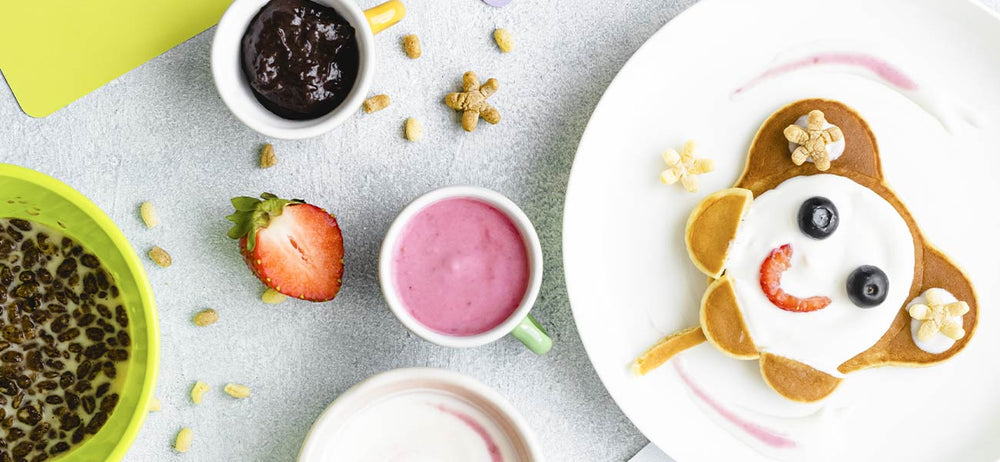In the early stages of childhood, nutrition plays a pivotal role in shaping a child's overall development. During this crucial period, the body and mind undergo rapid growth, making proper nutrition essential for building a strong foundation for future well-being. It is at this stage that parents have a significant role in ensuring their child receives the right nutrients for optimal growth and development. From a young age, children form eating habits that can persist into adulthood. Therefore, parents must introduce a diverse and balanced diet from the early stage.
Nutrient-rich foods not only contribute to physical health but also support cognitive function and emotional well-being. Parents play a crucial role in fostering mindful eating practices by teaching their children to appreciate the importance of consuming a variety of foods and by making mealtime a positive, enjoyable experience. Through positive reinforcement and a supportive environment, parents can encourage their children to develop a healthy relationship with food, mitigating the risk of malnutrition and promoting optimal growth. Moreover, parents should be mindful of the child's individual needs and preferences. By involving children in meal planning and preparation, parents can instil a sense of responsibility and ownership over their food choices, promoting a positive attitude towards nutrition.
Thus, the role of parents in shaping a child's nutritional habits extends far beyond the dinner table. It is a holistic approach that not only safeguards against malnutrition but also sets the stage for the child's comprehensive development—physically, cognitively, and emotionally.
Key considerations for ensuring adequate nutrition in children
- Balanced Diet: Provide a balanced diet that includes a variety of foods from all food groups, including fruits, vegetables, whole grains, lean proteins, and dairy or dairy alternatives. This ensures that children receive a wide range of essential nutrients.
- Adequate Nutrient Intake: Ensure that children get sufficient nutrients such as vitamins, minerals, and antioxidants, which are crucial for their growth and development. Protein, Iron, calcium, vitamin D, and omega-3 fatty acids are particularly important.
- Hydration: Encourage regular water intake. Water is essential for various bodily functions, and children may not always recognize when they are thirsty. Limit sugary drinks and focus on water as the primary beverage.
- Portion Control: Be mindful of portion sizes to prevent overeating. Children's portion sizes should be appropriate for their age and activity level. Pay attention to hunger and fullness cues.
- Limit Processed Foods and Sugars: Minimize the consumption of processed and sugary foods. These often provide empty calories and may displace nutrient-dense foods from the diet.
- Regular Meals and Snacks: Establish a routine of regular meals and snacks to provide a steady supply of energy throughout the day. Aim for three main meals and nutritious snacks in between to support sustained energy levels.
- Inculcate Healthy Eating Habits: Children learn by example, so model healthy eating habits. Share meals as a family, and let children see you enjoying a variety of nutritious foods.
- Prevent Food Aversion: Introduce a regular variety of foods, especially at lunch for children to deal with their picky eating tendencies. By promoting diversity, parents can foster a positive and open attitude toward a wide range of foods, ensuring a strong foundation for a lifetime of healthy eating habits.
- Encourage Fruits and Vegetables: Promote a love for fruits and vegetables by incorporating them into meals and snacks. Experiment with different colors and textures to make these foods more appealing.
- Food Safety: Practice proper food safety to prevent foodborne illnesses. Teach children about safe food handling and the importance of washing hands before meals.
- Consider Individual Needs: Recognize that each child is unique, and their nutritional needs may vary. If there are specific concerns or dietary restrictions, consult with a healthcare professional.
- Physical Activity: Combine a healthy diet with regular physical activity to support overall well-being. Encourage activities that children enjoy, whether it's sports, active play, or family outings.
-
Regular Health Check-ups: Schedule regular health check-ups to monitor the child’s growth and development. Address nutritional concerns or developmental issues with healthcare professionals.
Ways to make Boring Meals Exciting
Enhancing the appeal of meals for children necessitates a strategic blend of creativity, nutritional considerations, and an emphasis on enjoyment. Following are some fun and food ideas for children to make them more interested in healthy and mindful eating.
- Colourful Presentation:
- Creative Shapes:
- Dip It:
- Make Your Own:
- Food on a Stick:
- Play with Names:
- Storytelling at the Table:
- Food Art:
- Mini Portion Sizes:
- Incorporate Fun Themes:
- Healthy Desserts:
- Cooking Together:
Some healthy snacks for children
Indian cuisine presents a fusion of tastes, providing nutritious and easy-to-prepare snacks that are delightful for children. The following are some options:
-
Fruit Chaat: Create a fruit chaat with a mix of seasonal fruits like apples, bananas, oranges, and pomegranates. Add a pinch of black salt and chaat masala for a tasty and nutritious twist.
-
Vegetable Paratha wrap: Prepare whole wheat parathas with a filling of finely chopped mixed vegetables like spinach, carrots, and peas. Roll them up and serve with a side of yogurt for a wholesome snack.
-
Dhokla: Prepare steamed dhokla made from gram flour. Cut it into bite-sized pieces and garnish with curry leaves for added flavor.
-
Baked Sweet Potato Fries: Slice sweet potatoes into thin strips, toss them with a bit of olive oil and mild spices, and bake until crispy. Sweet potatoes are rich in fiber and essential nutrients. A healthier alternative to potato fries.
-
Masala Puffed Rice (murmure): Mix puffed rice with roasted peanuts, chopped onions, tomatoes, and a drizzle of lemon juice. Sprinkle chaat masala and enjoy a crunchy snack.
-
Chapati Pizza: Use whole wheat chapatis as the pizza base. Spread a layer of homemade tomato sauce, add veggies, and top with a sprinkle of cheese. Bake until the cheese melts for a healthy pizza alternative.
-
Paneer Tikka: Marinate paneer cubes in a mixture of yogurt and spices. Skewer them and bake until golden brown. Serve with mint chutney for a protein-rich snack.
-
Moong Dal Chilla: Make chillas using moong dal. Add finely chopped vegetables to the batter and cook on a griddle.
-
Vegetable Upma: Prepare upma using semolina (sooji) and add colorful vegetables like peas, carrots, etc. Season with curry leaves, and cashews for a flavorful dish.
-
Cucumber Sandwiches: Spread a mixture of cream cheese and mint chutney on whole wheat bread slices. Add thinly sliced cucumbers to make refreshing and wholesome sandwiches.
Remember to consider individual taste preferences and allergies when preparing these snacks.
References
-
Haskins, J. 2019. Healthy You: Eat the rainbow! Bringing color, nutrition to your plate. The Nation's Health, 48, 32-32.
- UNICEF: https://www.unicef.org/nutrition/early-childhood-nutrition


